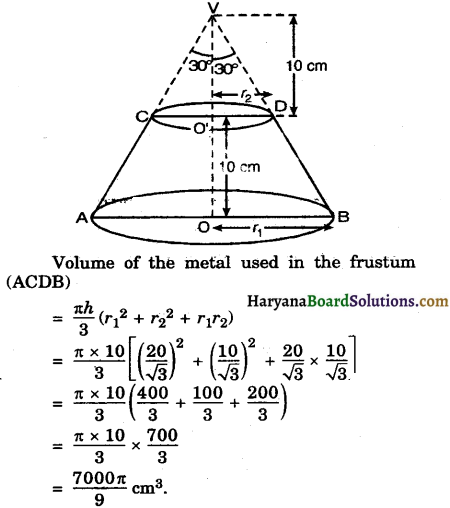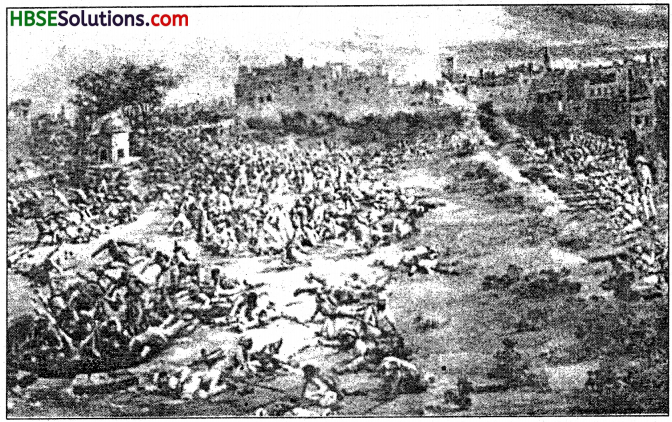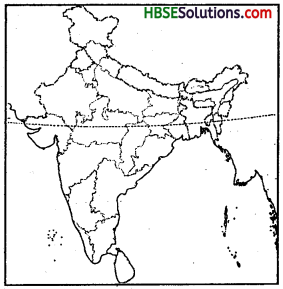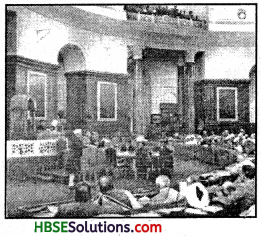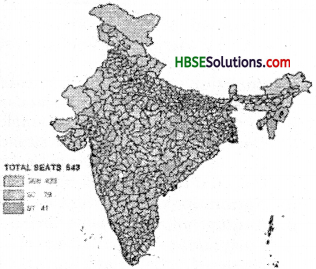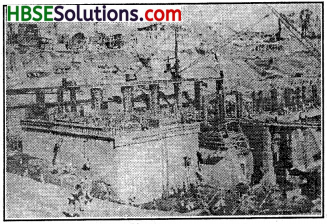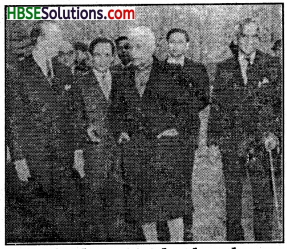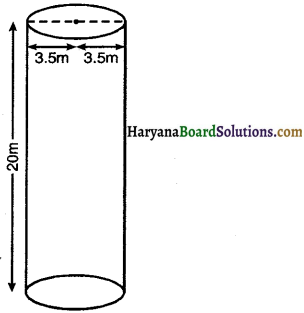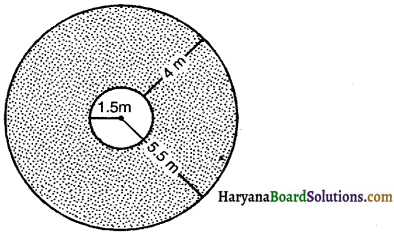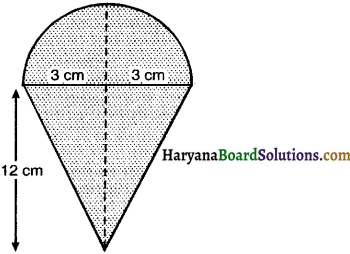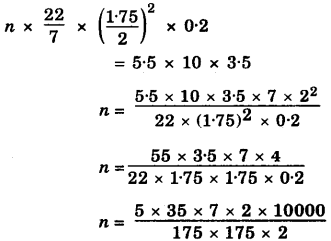Haryana State Board HBSE 8th Class Social Science Solutions History Chapter 10 The Changing World of Visual Arts Textbook Exercise Questions and Answers.
Haryana Board 8th Class Social Science Solutions History Chapter 10 The Changing World of Visual Arts
HBSE 8th Class History The Changing World of Visual Arts Textbook Questions and Answers
LET′S IMAGINE
Imagine you are a painter living in the early twenteith century India trying to develop a national style of paintings. What elements discussed in the chapter will form part of that style of painting. What elements discussed in the chapter will form part of that style? Explain your choice.
Answer:
The elements of paintings of my choice related with a national style of painting will be:
1. National flag
2. National symbols.
3. National Animals and National Birds
4. Some freedom fighters and National Birds
5. Some topics from Epics-Mahabharata, Shrimadbhagwad Geeta, Ramayana.
6. Some topics related with Buddha’s life and Buddhism.
7. Some topics related with Vardhman Mahavir and J ainism.
8. All sikh gurus.
9. Some sufi saints.
10. Some socio-religious reformers.
11. Some framers of Indian Constitution
12. Historical buildings, historical temples, forts, tombs, remain, sculptures, scenes from village temples, wells, tanks, streams, greenuy lakes, gardens etc.

LET′S RECALL
The Changing World of Visual Arts HBSE 8th Class Question 1.
Fill in the blanks:
(a) The art form which observed carefully and tried to capture exactly what the eye saw is called ………….. .
(b) The style of painting which showed Indian landscape as a quaint, unexplored land is called ………….. .
(c) Paintings which showed the social lives of Europeans in India are called …………….. .
(d) Paintings which depicted scenes from British imperial history and their victories are called …………… .
Answer:
(a) the idea of realism
(b) the picturesque
(c) evocative picturesque
(d) evocative picturesque landscapes.
The Changing World of Visual Arts Questions And Answers HBSE Question 2.
Point out which of the following were brought in with British art:
(a) Oil painting
(b) miniatures
(c) life-size portrait painting
(d) use of perspective
(e) mural art.
Answer:
(a) Oil Painting: It was brought in with the British art. It is technique with which Indian artists were not familiar.
(b) Miniatures: The technique already prevailed in India. Indian tradition of painting in India Indian tradition of painting portraits in miniature.
(c) Life-size portrait painting: It became popular during the British rule. Colonial portraits were life-size images that looked life-like and realX This new style of portraiture also served as an ideal means of displaying the lavish life style, wealth and status that the empire generated.
(d) Use of perspective: This technique also became more popular during the colonial rule. It was a technique of art of drawing solid objects in their natural appearance and relation.
(e) Mural art: It means a wall painting. It was a traditional style of art which already prevailed in India.
The Changing World of Visual Arts Solutions HBSE 8th Class Question 3.
Describe in your own words one painting from this chapter which suggests that the British were more powerful than Indian. How does the artist depict this nation?
Answer:
The adjoining pictures:
(i) by Thomas Daniell and the picture
(ii) by Thomas William Daniell suggest that the British were more powerful than India.

(a) The picture:
(i) shows the remains of an ancient civilisations tl ruins. It suggests that as if this decaying civilisation would change and modernise only through British government.
(b) The picture
(ii) represents the image of British rule bringing modern civilisation
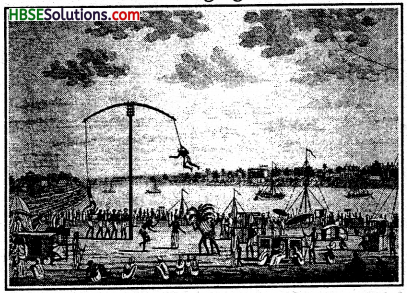
to India in the numerous pictures of the late-eitheenth century Calcutta. The picture (i) seeks to represent the traditional life of India pre-modern, changeless and motionless. However, the picture (ii) shows the modernising influence of British rule, by emphasising a picture of dramatic change.
The Changing World of Visual Arts Class 8 HBSE Question 4
Why did the scroll painters and potters come to Kalighat? Why did they begin to paint new themes?
Answer:
1. Meaning of scroll painting:
Painting on a long roll of paper that could be rolled up, is called scroll painting. In the nineteenth century a new world of popular art developed in many of the cities of India.
2. Cause of coming:
(a) In Bengal, around the pilgrimage centre of the temple of Kalighat, local village scroll painters (called patuas) and potters (called kumors in eastern India and kumhars in north India) began developing a new style of art. They moved from the surrounding villages into Calcutta in the early nineteenth century. This was a time when the city was expanding as a commercial and administrative centre.
(b) The British colonial offices were coming up in new huge buildings and roads were being build, markets were being established. The city appeared as a place of opportunity where people could come to make a new living. Village artists too come and settled in the city in the hope of new patrons and new buyers of their art.
3. Old themes of the painters:
Before the nineteenth century, the village patuas and kumors had worked on mythological themes and produced images of gods and goddesses. On shifting to Kalighat, they continued to paint these religious images. Traditionally, the figures in scroll painting looked flat, not rounded. Now Kalighat painters began to use shading to give them a rounded form, to make the images look three-dimensional. Yet the images were not realistic and lifelike. In fact, what is specially to be noted in these early Kalighat paintings is the use of a bold, deliberately non-realistic style, where the figures emerge large and powerful, with a minimum of lines, detail and colours.
4. New trend within Kalighat artists:
(i) After the 1840s, we see a mew trend within the Kalighat artists. Living in a society where values, tastes, social norms and customs were undergoing rapid changes, Kalighat artists responded to the world around, and produced paintings on social and political themes.
(ii) Many of the late-nineteenth century Kalighat paintings depict social life under British rule. Often the artists mocked at the changes they saw around, ridiculing the new tastes of those who spoke in English and adopted Western habits, dressed like sahibs, smoked cigarettes, or sat on chairs.
(iii) They made fun of the westernized baboo, criticised the corrupt priests, and warned against women moving out of their homes. They often expressed the anger of common people against the rich, and the fear many people had about dramatic changes of social norms.

Class 8 The Changing World of Visual Arts HBSE Question 5
Why can we think of Raja Ravi Varna’s paintings as national?
Answer:
Raja Ravi Vanna of Travancore (Kerala):
(1) A brief introduction: Raja Ravi Varma was one of the first artists who tried to create a style that was both modem and national. Ravi Varma belonged to the family of the Maharajas of Travancore in Kerala, and was addressed as Raja.
(2) Varma painted themes from Indian mythology: He mastered the Western art of oil painting and realistic life study, but painted themes from Indian mythology. He dramatized on canvas, scene after scene from the Ramayana and Mahabharata, drawing on the theatrical performances of mythological stories that he witnessed during his tour of the Bombay Presidency.
(3) Varma’s tone and the artistic work: From the 1880s, Ravi Varma’s mythological paintings became the rage among Indian princes and art collectors, who filled their palace galleries with his works.
(4) Prepared a team of artists:
Responding to the huge popular appeal of such paintings, Ravi Varma decided to set up a picture production team and printing press on the outskirts of Bombay. Here colour prints of his religious paintings were mass produced. Even the poor could now buy these cheap prints.
LET’S DISCUSS
History Class 8 Chapter 10 HBSE Question 6.
In what way did the British history paintings in India refect the attitudes of imperial conquerors?
Answer:
(1) The British history paintings in India reflect the attitudes of imperial conquerors:
No doubt the English were imperialists in India. Their attitudes was of the imperial conquerors and rulers. They considered themselves superior to the Indians on every field. The entire British history of paintings in India is a living proof of it. It reflects their attitude of colonial and imperial conquests.
(2) Painting history by the British:
(a) One category of imperial art of the British called “history painting”. This tradition sought to dramatise and recreate various episodes of British imperial history, and enjoyed great prestige and popularity during the late eighteenth and early nineteenth centuries.
(b) British victories in India served as rich material for history painters in Britain. These painters drew on firsthand sketches and accounts of travellers to depict for the British public a favourable image of British actions in India.
(c) These paintings once again celebrated the British: their power, their victories, their supremacy. One of the first of these history paintings was produced by Francis Hayman in 1762 and placed on public display in the Vauxhall Gardens in London.
(d) The British had just defeated Sirajuddaulah in the famous Battle of Plassey and installed Mir Jafar as the Nawab of Murshidabad. It was a victory won through conspiracy and the traitor Mir Jafar was awarded the title of Nawab.
(e) In the painting by Hayman this act of aggression and conquest is not depicted. It shows Lord Clive being welcomed by Mir Jafar and his troops after the Battle of Plassey.
Class 8 History The Changing World of Visual Arts HBSE Question 7.
Why did you think some artists wanted to develop a national style of art.
Answer:
I think some artists wanted to develop a national style of art due to following reasons:
(i) Tow’ards the end of the nineteenth century, a stronger convention was establish between art and nationalism. Many painters now tried to develop a style that could be considered both modern and Indian.
(ii) There was a huge popular appeal of mythological stories paintings, related with different scenes from the Mahabharata including (Shrimadbhagwata Geeta).
(iii) Some Bengali painters and artists felt that a genuine Indian style of painting had to draw inspiration from non-Western art and tradition and they tried to capture the spiritual essence of the East. So they broke away from the convention of oil painting and the realistic style and toward for inspiration to medieval Indian traditions of miniature painting and the ancient art of mural painting in the Ajanta caves.
(iv) There were some Indian artists and painters who felt that artists had to explore real life instead of illustrating ancient books and look for inspiration from living folk art and tribal designs of different regions of India rather than’ ancient or medieval art forms. They accepted the challenge of the western artists who had been depicting the Indians as inferior.
(v) Some great nationalists notice the higher position provided to the British flag (the Union Jack) and felt their sentiments hurted. They wanted to paintings of Indian freedom fighters, great historical heroes, reformers and symbols directly related with India. A large number of local painters produced a vast number of images of local plants and animals, historical buildings and monuments, festivals, processions, traders %nd crafts etc.
Question 8.
Why did some artists produce cheap popular prints? What influence would such prints have had on the minds of people who looked at them?
Answer:
(i) The artists produced cheap popular prints so that even the poor could buy them.
(ii) Such prints would have had a positive influence on the minds of people who looked at them. Colour prints of their religious paintings became mass products. The poor people could also buy these cheap prints.

LET’S DO
Question 9.
Look at any tradition of art in your locality. Find out how its has changed in the last 50 years. You may check who supports the artists, and who looks at their art. Remember to examine the changes in styles and themes.
Answer:
(i) I have looked at woHd famous Madhubani paintings of my locality.
(ii) Today artists make modern art with hidden themes. It requires lots of imagination. Such paintings need to be understood. While before 50 years, artists used to prepare mythological paintings, scenaries, portraits, etc. which did not require such imagination.
(iii) The central and the state governments support the artists. Sita Devi is a world famous painter.
(iv) Generally, the rich people looks af their art.
HBSE 8th Class History The Changing World of Visual Arts Important Questions and Answers
Very Short Answer Type Questions
Question 1.
Who became the Nawab of Arcot in 1775?
Answer:
Mohammad Ali Khan.
Question 2.
Who were Tilly Kettle and George Willison?
Answer:
Tilly kettle and George Willison were two visiting European artists in India in 1770.
Question 3.
What was the idea of realism?
Answer:
The idea of realism was a belief that artists had to observe carefully and deict faithfully what the eye saw when the artist produced was expected to look real and life like.
Question 4.
How did the European artists depict India in their paintings?
Answer:
The European artists perceived India as a quaint land.
Question 5.
Why did the European portrait painters come to India?
Answer:
The European portrait painters came to India with the hope of getting the contract for making the portraits of European officials and Indian rulers.
Question 6.
What was the image of Indians depicted in the European Paintings?
Answer:
The image of Indian depicted in the European painting was that of inferior people as the servants of the Europeans in the European paintings.
Question 7.
What was Gothic architectural style?
Answer:
In Gothic architecture, the new buildings established by the new imperial rulers had pointed round arches and elongated structures on pillars.
Question 8.
Name the forms of imperial art.
Answer:
(a) Picturesque painting
(b) Portrait painting
(c) History painting.

Question 9.
Why did a large number of European portrait painters come to India?
Answer:
Since portrait painting became popular, many European portrait painters came to India in search of profitable commissions.
Question 10.
Name any famous European portrait painters who came to India.
Answer:
Johann Zoffany was one of the most famour visiting European painters.
Question 11.
When did Zoffany come to India?
Answer:
He came to India in the mid-1780s for five years.
Question 12.
How did colonial rule change the world of visual arts?
Answer:
The colonial rule introduced several new art forms sytles, materials and techniques which were creatively adapted by Indian artists for local patrons and markets.
Question 13.
What do the ruins of buildings show?
Answer:
The buildings are reminders of past glory, remains of an ancient civilisation that was now in ruins.
Short Answer Type Questions
Question 1.
What was company painting? Why did the East India Company officials eagerly collect these paintings?
Answer:
(a) Company paintings were those paintings by local painters that covered images of local plants and animals, historical buildings and monuments, festivals and processions, trades and crafts, castes and communities.
(b) British officials wanted images so that they could understand India, remember their life in India and depict India to the Western World.
Question 2.
Why did the court painters start producing paintings for the East India Company officials?
Answer:
The court painters started producing paintings, for the East India Company officials because many of the local courts declined in the eighteenth century with the establishment of British power, these courts lost their power and wealth. They could no longer maintain painters and pay them to paint for the court.
Question 3.
What did Raja Ravi Verma do to popularise his work?
Answer:
Raja Ravi Verma set-up a picture production team and printing press on the outskirts of Bombay. In this printing press, the colour prints of his religious paintings were produced on large scale. Now these cheap prints and paintings were easily accessible to the poor also.
Question 4.
“The artists, Daniells (Thomas and his nephew William) contrasted the image of traditional India with that of life under British rule.” Explain briefly the statement.
Answer:
(a) It is a historical fact that the image of British rule bringing modern civilization to India is powerfully emphasized in the numerous pictures of late-eighteenth century Calcutta drawn by the Daniells.
(b) In these drawings, we find the making of a new Calcutta, with wide avenues, majestic European style buildings and new modes of
transport. There is life and activity on the roads, there is drama and excitement.
(c) Daniells contrasted the image of tranditional India with that of life under British rule.
(d) Their works represented the traditional life of India as pre-modern, changeless and motionless, typified by faqirs, cows and boats sailing on the river.
(e) These pictures also show modernising influence of British rule.
Question 5.
Why did some of the Indian Nawabs begin commissioning imposing oil portraits by European painters? What was done by the Nawab of Arcot, Muhammad Ali Khan in this regard.
Answer:
Some of the Indian Nawabs, began commissioning imposing oil portraits by European artists because they hoped to socialise with the British and adopted their styles and taste.
Nawabs of Arcot, Muhammad Ali Khan hoped to socialise with the British and adopt their styles and taste. After a war with the British in the 1770s Muhammad Ali Khan became a dependent prisoner of the East India Company. But he nonetheless commissioned two visiting European, artists, Tilly Kettle and George Williamson to paint his portraits and gifted these paintings to the King of England and the Directors of the East India Company. The Nawabs had lost political power but the portraits allowed him to look at himself a royal figure.

Question 6.
What were Company Paintings?
Answer:
Local painters produced a vast number of images of local plants and animals, historical buildings and monuments, festivals and procession, trades and crafts, castes and communities. These pictures were enthusiastically collected by the East India Company officials. These paintings were called company paintings.
Long Answer Type Questions
Question 1.
What were the ‘New Forms of Imperial Art’ brought by European Artists?
Answer:
From the eighteenth century a stream of European artists came to India along with the British traders and rulers. The artists brought with them new styles and new conventions of painting. These pictures helped shape Western perceptions of India.
With the new idea of realism, what the artist produced was expected to look real and life like. The technique of oil painting was introduced which enabled artists of produce images that looked real. The European artists seemed to emphasise the superimity of Britain: its culture; its people and power. The different forms of imperial art were: picturesque landscape painting, portraits of authority, history painting etc.
Question 2.
Write a description of “Portrait of Authority” in colonial Indians.
Answer:
- The rich and the powerful, both British and Indian, wanted to see themselves on canvas. Colonial portraits were life size images that looked life like and real.
- The size of the paintings itself projected the importance of the persons who commissioned these portraits this new style of portraiture also served as an ideal means of displaying the lavish lifestyle, wealth and status that the empire generated.
- As portrait painting became popular, many European portrait painters came to India in search of profitable commission.
- The Indians are shown as submissive, as inferior, as serving their white masters, while the Britishers were shown as superior and imperious.
- Indians are never at the centre of such paintings, they usually occupy a shadowy background.
Question 3.
What happened to the Indian Court artists? How did the painters (who earlier painted miniatures) at Indian princely courts react to the new tradition of imperial art?
Answer:
Some of the Indian artists worked as painters in the courts of Indian princes. They were also encouraged to absorb the tastes and artistic styles of the British.
With the establishment of British power many of the local courts last their influence and wealth. They could no longer support painters and pay them to paint for the court. It become difficult for the artists to earn a living. Many of them turned to the British.
The local painters started producing a number of images of local plants and animals, historical buildings and monuments, festivals and processions, trades and crafts, castes and communities. These pictures were eagerly collected by the East India Company officials and come to be known as company paintings.
Question 4.
Describe the main influences on modern Indian art.
Answer:
Main influences on Modern Indian Art:
(a) The local kings and princes patronized the Indian art after that it came under the dominion of the colonial rule. As a result, India was generally influenced the European Colonialism.
(b) Following the Mughal and Rajasthan traditions, a few princely courts in Rajasthan and the Punjab Hills patronised the Indian art.
(c) The discovery of ancient and medieval art hidden coves, palaces and temples gave impetus to the art in India.
(d) The spread of Western culture gave rise to urban culture. Cities like Calcutta, Bombay and Madras became the centres of art.
(e) The foreign rule alsainfluenced the Indian art because the foreigners dominated the cultural life on account of their political and economic domination.
(f) The excavations of Mohanjodaro and Harappa, the Ajanta and Ellora caves stimulated the Indian artists.
(g) There arose nationalism in the Indian artists. So the Indian artists wanted to discover the rich cultural heritage of India in the ancient past.

The Changing World of Visual Arts Class 8 HBSE Notes
- Works of Art: Painting and sculpture etc. are called works of art.
- Convention: An accepted norm or style.
- Engraving: A picture printed onto paper from a piece of wood or metal into which the design or drawing has been cut.
- Portraiture: The art of making portraits.
- Commission: To formally choose someone to do a special piece of work.
- Residents: Those British officers who were posted by the company in Indian princely courts to control the affairs of the state undermining the power of the ruler.
- History Painting: A category of imperial art.
- Mural: A wall painting.
- Perspective: The way that objects appear similar when they are further away and the way parallel lines appear to meet each other at a point in the distance.
- Company Painting: The pictures eagerly collected by the British East India Company officials came to be known as company paintings.
- Scroll Painting: Paintings on a long roll of paper that could be rolled up.
- Patras: Scroll painters were called kumors or kumkars or Parajapatis.
- Life Study: Study of human figures from living models who pose for the artists.
- Patronized: Protected.
- Heritage: Ancestral, inherited.
- Themes: Subjects, topic.
- Agony: Pain trouble.
- Art noureau: New art.
- Mythology: Religious tradition
![]()
![]()
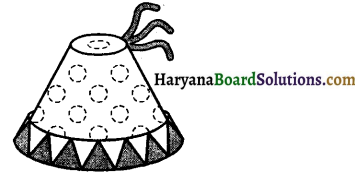
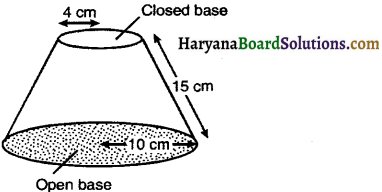
![]()
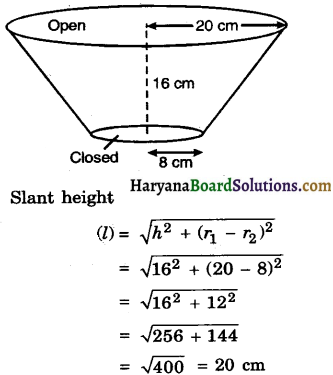
![]()
